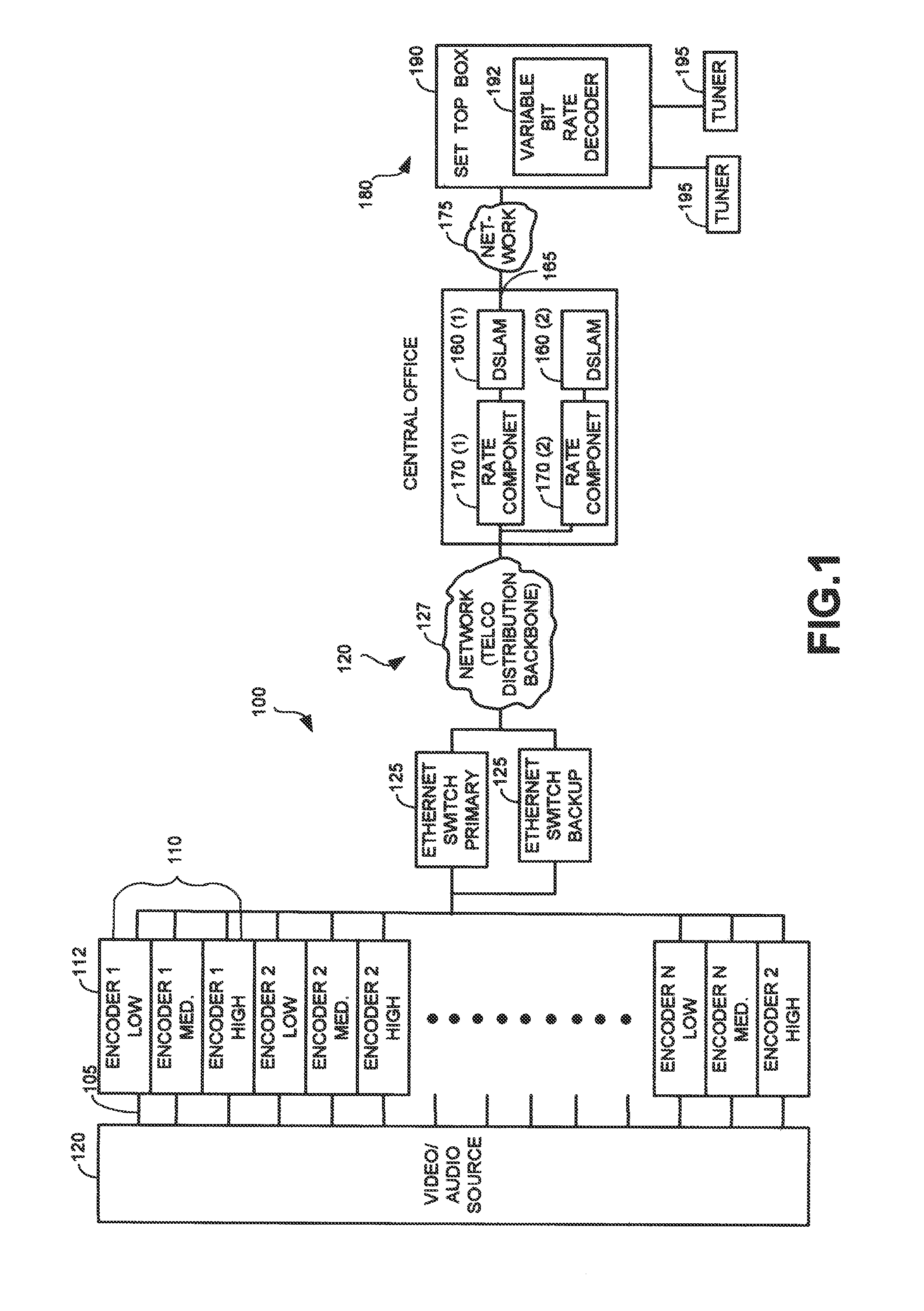Real Time Bit Rate Switching for Internet Protocol Television
a bit rate switching and internet protocol technology, applied in the field of network communication, can solve the problems of increasing the challenges of the delivery system the inability of the majority of the delivery system to provide such content, and the inability to efficiently provide such content, so as to maximize the bandwidth available and achieve high quality
- Summary
- Abstract
- Description
- Claims
- Application Information
AI Technical Summary
Benefits of technology
Problems solved by technology
Method used
Image
Examples
Embodiment Construction
FIG. 1 shows a content delivery system 100 in which multiple encoders sets 110(1)-110(n) are connected to video / audio (video, audio, or both) sources 120. Each encoder set 110 includes one or more individual encoders 112(1)-112 (n).
Encoders 112(1)-112(n) can be, for example, audio or video encoders that receive and encode input signals 105(1)-105(n) for transmission. Received content (which is subsequently encoded for delivery) can be of the form of television signals representing broadcast channels (e.g., standard or high definition), channel guides, live broadcast feeds, or other content. Encoders 112(1)-112(n) can support various encoding protocols including MPEG-2, H264 and VC-1 codec standards. Encoders 112(1)-112(n) typically can encode and transmit data at multiple bitrates. The bitrate an encoder uses to encode a signal can be varied based on, for example, the complexity of the signal, the available bandwidth in an output channel, or the quality desired or required for the e...
PUM
 Login to View More
Login to View More Abstract
Description
Claims
Application Information
 Login to View More
Login to View More - R&D
- Intellectual Property
- Life Sciences
- Materials
- Tech Scout
- Unparalleled Data Quality
- Higher Quality Content
- 60% Fewer Hallucinations
Browse by: Latest US Patents, China's latest patents, Technical Efficacy Thesaurus, Application Domain, Technology Topic, Popular Technical Reports.
© 2025 PatSnap. All rights reserved.Legal|Privacy policy|Modern Slavery Act Transparency Statement|Sitemap|About US| Contact US: help@patsnap.com



